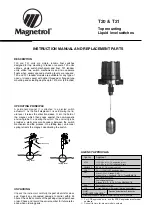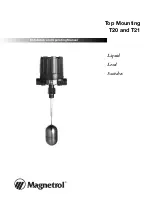
38
2 X 2 SCSI MATRIX SWITCH
6. SCSI Technical Information
6.1 SCSI Basics
6.1.1 SCSI-1
The original specification supports data transfers up to 5 MBps on an 8-bit wide
parallel data bus. SCSI-1 standards had some incompatibility problems between
host adapters and peripheral devices. The need to improve compatibility, increase
transfer rates, and add other features for better performance required a review of
the specifications.
6.1.2 SCSI-2
Improved compatibility and higher transfer rates were provided in this
enhancement. The addition of “Wide SCSI” permits 16 or 32 bits to be transferred
in parallel, the latter requiring two cables. In combination with the “Fast SCSI”
option, synchronous data transfers up to 10 MBps for 8-bit, 20 MBps for 16-bit, and
40 MBps for 32-bit buses were achieved.
6.1.3 SCSI-3
The most significant additions include the ability to address up to 32 devices, a
16-bit single-cable data bus, and serial SCSI protocol. The SCSI-3 standard has
been split into several subdocuments, including the SCSI Parallel Interface (SPI),
which is based on a layered protocol, and the SCSI Interlocked Protocol (SIP), a
software link protocol.
6.1.4 S
IGNAL
W
IRING
The signal wiring used in a SCSI bus has an impact on bus performance. The two
wiring techniques generally used for SCSI are single-ended and differential. With
single-ended wiring, a single wire carries the signal from initiator to target. Single-
ended circuitry is not noise resistant and is generally limited to about 6 meters
(20 ft.) at data transfer speeds of 10 MB per second.
Differential wiring uses two wires for each signal and offers exceptional noise
resistance because it does not rely on a common ground. This allows cables up to
25 meters (82 ft.) and reliable operation at 10 MB or more per second. Differential
wiring and circuitry is more complex than single-ended and generally tends to be
more expensive to implement.















































